- 2023
- Aug
- 8
Checking out a Heathkit AG-7 Signal Generator
This is a Heathkit AG-7 audio signal generator. One of Heathkit’s many pieces of test equipment, this one dates to the 1950s. It has a mix of tube names (most with RCA type labels) indicating it was probably in use for quite some time.
This was purchased at the Breezeshooter’s Hamfest in Butler, PA during their spring 2023 show. It was kind of a spur of the moment purchase. I initially passed it by, but picked it up on the way out.

I really don’t have a use for this item, but what caught my attention was the label on the side. This appears to have been in the rack at a central (phone) office in Erie PA. Was this device generating the craft access test tones? How many technicians listened to this device’s output over the years? It’s kind of cool to think about that.
The telcos were big fans of stamping stuff with ink instead of putting tags on thigs. That it has an actual General Telephone sticker is neat in itself.

Top of the device is a little dusty, so it appears that it was well cared for in it’s life and not just shoved in a barn somewhere.

Similarly, the bottom seems to be in good shape.

It almost looks like it was factory built,

But there are tell-tale signs it was probably put together by someone at the phone company. There is pencil labelling all over the chassis where someone was building it and making notes while they did. That’s always neat to find and gives you a connection to the person that built the device.
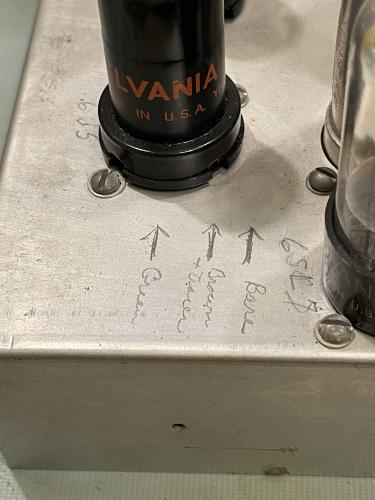
The case itself is in pretty good shape, just some surface rust where the paint was thin or damaged from use over time.

Small banana slicers are used to trim the output.
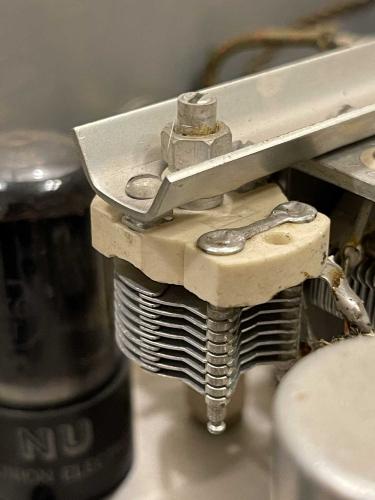
One of the terminals on the front was gone, but since those come apart easily, that’s to be expected. If I wanted to put this back into service, that would be easily fixed.
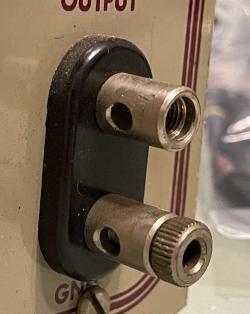
Here’s something that leads me to believe this was probably being used for test tone generation. Here’s the amplitude control. Note the two holes on either side of the pointer - this looks like it was strapped down at some point to give a known output level. The amplitude couldn’t be changed if the control couldn’t be adjusted.
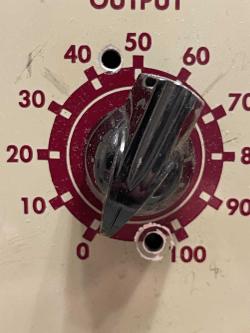
The visual inspection of the device didn’t reveal anything that I felt was concerning enough, and some quick checks of capacitors and other potential failure points seemed to indicate there wasn’t any immediate issues. Time to plug it in!
All of the tubes lit up, so on to checking the output. I let it warm up for a bit.
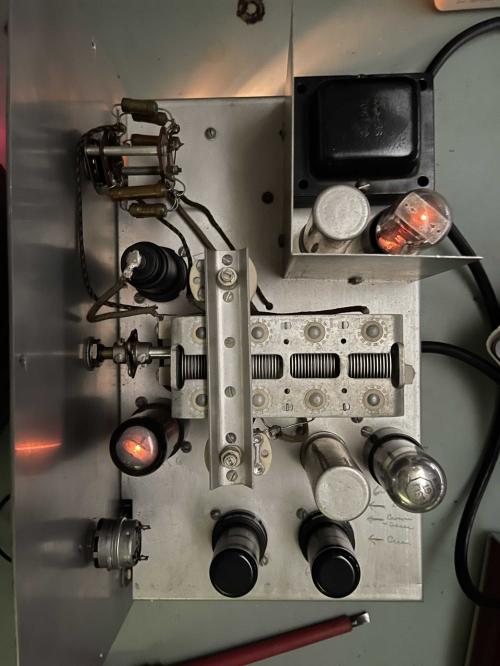
I randomly picked 300Hz as my test point, and set the dial as close as possible. The scope revealed that the device was both off in frequency vs. the dial, and had some problems with waveshape. While I didn’t do any troubleshooting at this point, I suspect that there are some leaky parts simply due to the age of the device.
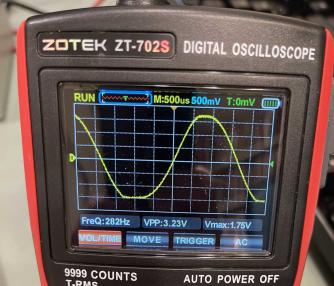
I ran up the scale with the frequency multiplier control, and it seemed to be pretty stable, generating the multiple of the selected frequency. I chose 3KHz as my next test point and adjusted the output to as close as possible to 3K.
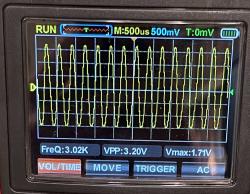
The dial was off a ways. I’m guessing the trimmer capacitors will take care of this, I just need to sit down and read the manual.
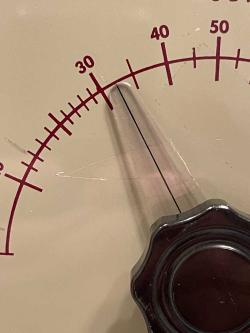
Without changing anything, I selected the squarewave output. It looks good, but drops off considerably vs. the sinewave output.
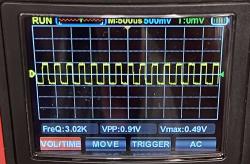
I’m not sure if this is the intended behavior, so I will again refer to the manual that I have not yet read.
Overall, this is kind of a neat piece of equipment. While it’s functionality could be exceeded with a piece of more modern equipment, sometimes it’s nice to have something that won’t be damaged (much) by accidentally having B+ on an input. If time allows, I may try and get this device up and running. It will probably require some new parts, as all of the old ones have drifted with age.
That will be a project for another day.
I’ve started working with this device: https://wereboar.com … part-1-observations/
This came from the Breezeshooters Hamfest in 2023: https://wereboar.com … uff-from-butler-but/
